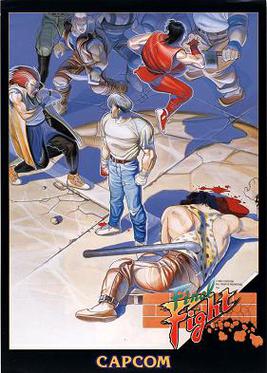
Final Fight is a side-scrolling beat-'em-up video game produced by Capcom. Originally released as an arcade game in 1989, it was the seventh title released for the CP System hardware. Set in the fictional Metro City, the game lets the player control one of three street fighters: former pro wrestler and city mayor Mike Haggar, expert brawler Cody Travers, and modern-day ninja Guy. The trio set out to rescue Jessica when she is kidnapped by the Mad Gear Gang.

Marvel vs. Capcom is a series of crossover fighting games developed and published by Capcom, featuring characters from their own video game franchises and comic book series published by Marvel Comics. The series originated as coin-operated arcade games, though later releases would be specifically developed for home consoles, handhelds, and personal computers.
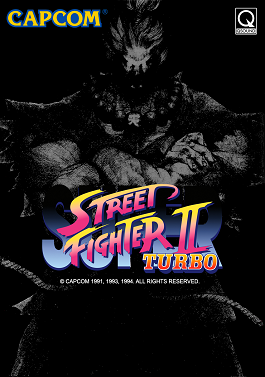
Super Street Fighter II Turbo is a fighting game released for the arcades by Capcom in Japan on February 23, 1994, in North America on February 23 and March 26, 1994 (beta) and in Europe in March 1994 (beta). It is the fifth installment in the Street Fighter II sub-series of Street Fighter games, following Super Street Fighter II: The New Challengers. Like its predecessor, it ran on the CP System II hardware.

Marvel vs. Capcom: Clash of Super Heroes is a crossover fighting game developed and published by Capcom. It is the third installment in the Marvel vs. Capcom series, which features characters from Capcom's video game franchises and characters from Marvel Comics. The game debuted in Japanese and North American arcades in 1998. It was ported to the Dreamcast in 1999 and the PlayStation in 2000. The game was re-released in 2012 for the PlayStation 3 and Xbox 360 as part of the Marvel vs. Capcom Origins collection.
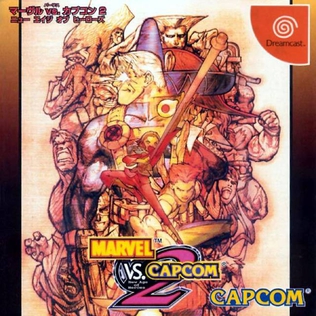
Marvel vs. Capcom 2: New Age of Heroes is a crossover fighting game developed and published by Capcom. It is the fourth installment in the Marvel vs. Capcom series, which features characters from both Capcom's video game franchises and comic book series published by Marvel Comics. Originally released in Japanese arcades in 2000, the game received ports to the Dreamcast, PlayStation 2, PlayStation 3, Xbox, Xbox 360, and iOS devices over the span of twelve years.

Lost Planet: Extreme Condition is a third-person shooter video game developed and published by Capcom for Xbox 360, Microsoft Windows and PlayStation 3. The game was released in Japan in December 2006 and worldwide in January 2007. Originally intended to be an Xbox 360 exclusive, it was later ported and released for Microsoft Windows in June 2007 and PlayStation 3 in February 2008.

Warhawk was a multiplayer third-person shooter video game developed by Incognito Entertainment for the PlayStation 3. It was a remake of an aerial warfare game of the same name, which was an early title on the original PlayStation. Santa Monica Studio assisted on development. It was the first PlayStation 3 game to be available both for download on the PlayStation Network and for retail on Blu-ray Disc. For the United States, Blu-ray Disc and PlayStation Network versions were released on August 28, 2007. The PlayStation Network version was released in Europe, Australia and Japan on August 30, August 31 and October 4 respectively. The Blu-ray Disc version was released in Australia and Europe on September 20 and September 21, respectively, but was not released in Japan.
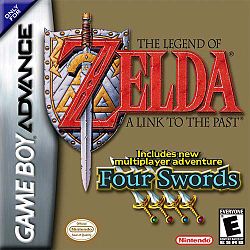
The Legend of Zelda: A Link to the Past and Four Swords is a compilation of two action-adventure games co-developed by Nintendo R&D2 and Capcom and published by Nintendo for the Game Boy Advance. The game was released in December 2002 in North America and in March 2003 in Japan and Europe. The cartridge contains a modified port of A Link to the Past, originally released for the Super Nintendo Entertainment System in 1991, and an original multiplayer-only game titled Four Swords, which serves as the 9th installment in The Legend of Zelda series.

Street Fighter IV is a 2.5D fighting game published by Capcom, who also co-developed the game with Dimps. It was the first original main entry in the series since Street Fighter III in 1997, a hiatus of eleven years.
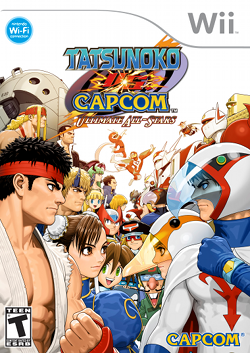
Tatsunoko vs. Capcom: Ultimate All-Stars is a crossover fighting game developed by Eighting and published by Capcom. The game features characters from both Capcom's video game franchises and various anime series produced by Tatsunoko Production. It was originally released in Japan for arcades and the Wii video game console in December 2008 as Tatsunoko vs. Capcom: Cross Generation of Heroes. Following high demand from international fans, Capcom worked with Tatsunoko to resolve international licensing issues and a second version, Ultimate All-Stars, was released for the Wii in North America, Japan, and Europe in January 2010, featuring additional characters and online multiplayer.
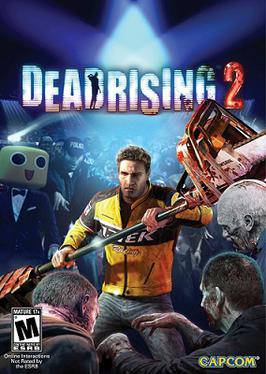
Dead Rising 2 is a 2010 action-adventure game developed by Blue Castle Games and published by Capcom. It was released between September and October 2010 for the PlayStation 3, Xbox 360, and Microsoft Windows. It is a sequel to Dead Rising, and is the second entry in the series of the same name. The game features a number of new features and improvements to its predecessor, including multiplayer options.

Super Street Fighter IV is a 2.5D fighting game produced by Capcom. It is an updated version of Street Fighter IV and has been said to mark the definitive end of the Street Fighter IV series. Having been deemed too large an update to be deployed as DLC, the game was made into a standalone title but given a lower price than that of a full retail game. It was released in April 2010 for the PlayStation 3 and Xbox 360. Super Street Fighter IV: 3D Edition was released as one of the launch titles for the Nintendo 3DS, with 3D functionality, on February 26, 2011, in Japan. The game has sold 1.9 million units worldwide, while the 3D Edition for the 3DS has sold an additional 1.1 million units worldwide.

Marvel vs. Capcom 3: Fate of Two Worlds is a crossover fighting video game developed by Capcom in collaboration with Eighting. The game features characters from both Capcom's video game franchises and comic book series published by Marvel Comics. It was released for the PlayStation 3 and Xbox 360 consoles in February 2011. It is the sequel to 2000's Marvel vs. Capcom 2: New Age of Heroes, the fifth installment of the Marvel vs. Capcom franchise, and the first to use three-dimensional character models instead of two-dimensional sprites.
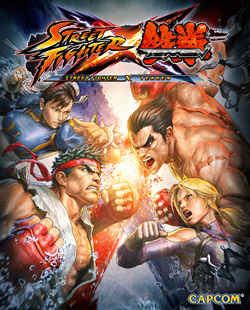
Street Fighter X Tekken is a crossover fighting game developed and published by Capcom and released in March 2012 for the PlayStation 3 and Xbox 360, in May for Windows and in October for the PlayStation Vita. The game features characters from both the Street Fighter franchise and Namco's Tekken series. In the game, each player selects two characters respectively and face other as duos in tag team fighting matches, with the objective to knock out one of the members from the opposing team. In addition to the game's multiplayer modes, the game also features a single-player Story mode with a plot revolving around a mysterious object called the "Pandora".

DmC: Devil May Cry is a 2013 action-adventure game developed by Ninja Theory and published by Capcom. Released in January for PlayStation 3, Xbox 360, and Windows, it is a reboot of the Devil May Cry series and set in a parallel universe to the mainline series.

Dragon's Crown is a 2013 action role-playing game developed by Vanillaware for the PlayStation 3 and PlayStation Vita. It was published in Japan and North America by Atlus and in PAL regions by NIS America. A high-definition port for PlayStation 4, Dragon's Crown Pro, was released by Atlus in 2018. Players navigate environments from a side-scrolling perspective, choosing from six character classes to fight in the style of a beat 'em up and acquiring loot through repeated dungeon exploration. The storyline follows adventurers as they journey across Hydeland and become involved in the search for the magical Dragon's Crown.

Ultimate Marvel vs. Capcom 3 is a crossover fighting game developed by Capcom in collaboration with Eighting. It is an updated version of Marvel vs. Capcom 3: Fate of Two Worlds. The game features characters from both Capcom's video game franchises and comic book series published by Marvel Comics. The game was released in November 2011 for the PlayStation 3 and Xbox 360, and was featured as a launch title for the PlayStation Vita in 2012. The game was later ported to PlayStation 4 in December 2016, and Windows and Xbox One in March 2017.

War for the Overworld is a real-time strategy video game developed by Brightrock Games based in Brighton, UK. The game started as a crowdfunding campaign on Kickstarter, which ran from November 29, 2012, to January 3, 2013. In the game, players build dungeons containing deadly traps to kill adventuring heroes that enter. The game is inspired by Dungeon Keeper, StarCraft, Overlord, and Evil Genius. It includes a campaign, sandbox mode, and online multiplayer.
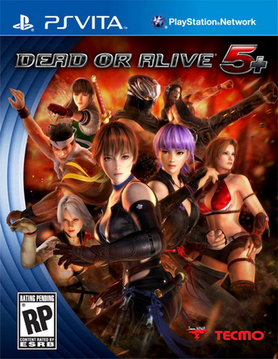
Dead or Alive 5 Plus is a fighting game in the Dead or Alive series, developed by Team Ninja and released by Tecmo Koei for the PlayStation Vita in March 2013. An expanded handheld port of the 2012 game Dead or Alive 5, DOA5+ was met with positive critical reception, gaining better scores than the original.
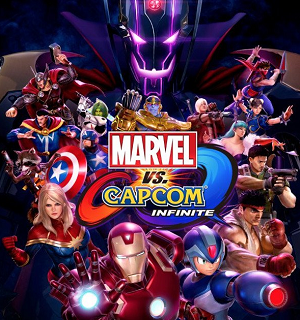
Marvel vs. Capcom: Infinite is a fighting video game developed and published by Capcom. It is the sixth main entry in the Marvel vs. Capcom series of crossover games. Like previous installments, players control characters from both the Marvel Comics and Capcom universes to compete in tag team battles. Infinite features two-on-two fights, as opposed to the three-on-three format used in its preceding titles. The series' character-assist moves have been removed; instead, the game incorporates a tag-based combo system, which allows players to instantly switch between their two characters to form continuous combos. It also introduces a new gameplay mechanic in the form of the Infinity Stones, which temporarily bestow players with unique abilities and stat boosts depending on the type of stone selected.





















